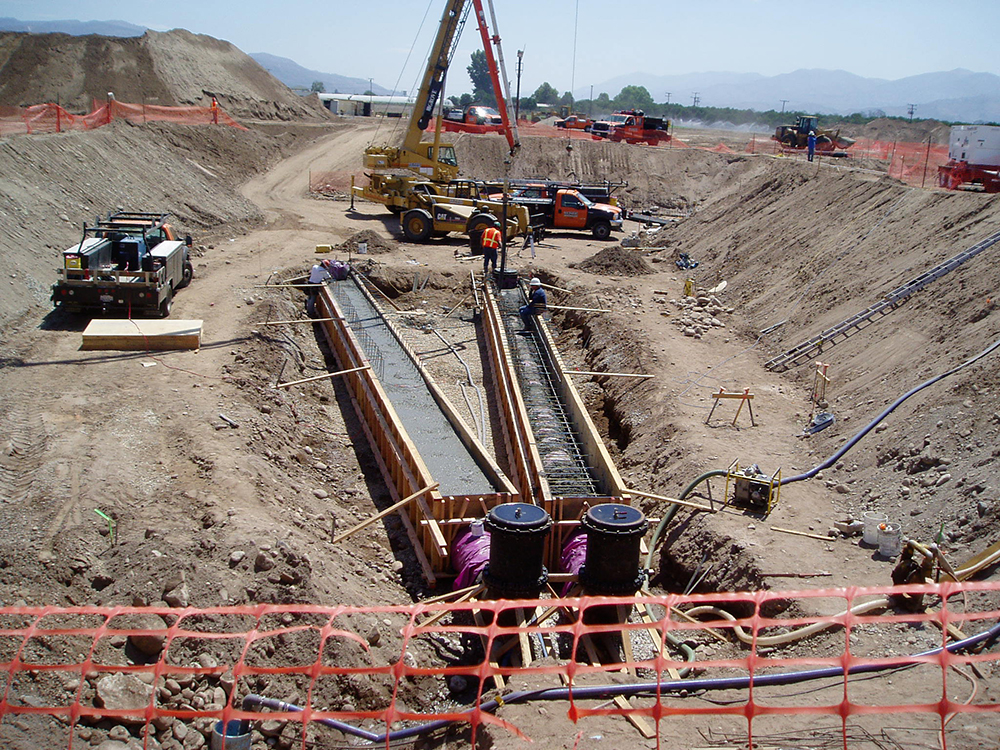The Project.
At the confluence of Sespe Creek and the Santa Clara River, the City of Fillmore has opened a new 2.4-MG per-day water recycling plant. This new plant was constructed on low-lying citrus orchard land in the southwestern portion of the City, requiring a new soil-cement levee to project the plant and ancillary improvements. Key plant facilities include an influent pump station, screens and grit removal chamber, odor control building, membrane bioreactor (MBR), chlorine contact basin, sludge dewatering building, chemical feed building, aerobic digesters, electrical and emergency generator building, administration and laboratory building, maintenance and operations building, recycled water storage tank (90-foot diameter, 26-feet high), and a recycled water pump station.
Client:
Kennedy/Jenks Consultants
Location:
Fillmore, CA
Services:
- Geotechnical
- Geotechnical Testing
- Special Inspection
- Materials Testing
Project Fact:
Leighton provided quality control testing of all earthwork and concrete during final design and construction, as part of the Kennedy/Jenks and W. M. Lyles design/build team.
The Leighton Solution.
Leighton provided earthwork and backfill testing, and all concrete sampling and testing, including shrinkage testing of concrete for these hydraulic structures. To reduce the risk of flooding, in addition to the levees, site grade is being raised roughly 3- to 5-feet, requiring a considerable amount of compacted fill to support new improvements. This has required our reanalysis of all foundation recommendations for the plant.
To protect the plant from a 100-year flood event, a 3,900-foot long and 12-foot-high soil-cement levee consisting of approximately 192,000 cubic-yards of soil was constructed. Levee soil-cement construction extended below existing grade for scour protection, requiring a considerable amount of dewatering, even during and after the driest year on record. Leighton prepared project-specific soil-cement specifications, performed in-situ testing and on-site laboratory testing, and tested cured soil-cement specimens in our in-house geotechnical laboratory.
Numerous soil borrow sources were submitted to us for testing, and soil-cement mix design was developed by us based on suites of mix-design testing, including unconfined compressive strength testing of remolded specimens in accordance with ASTM standard test methods. Post construction conformation coring and compression testing was also performed. Levee construction was in accordance with requirements of the Ventura County Watershed Protection District (VCWPD).



